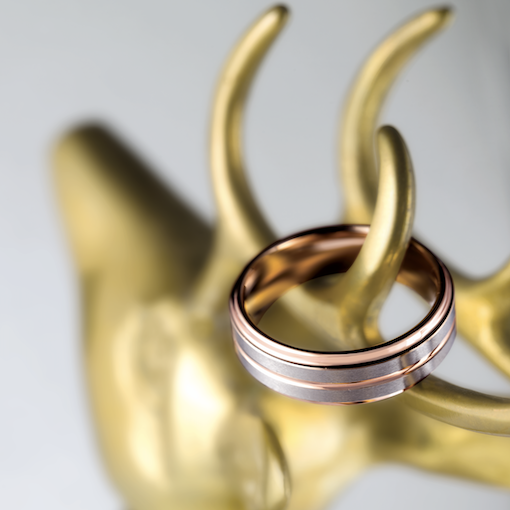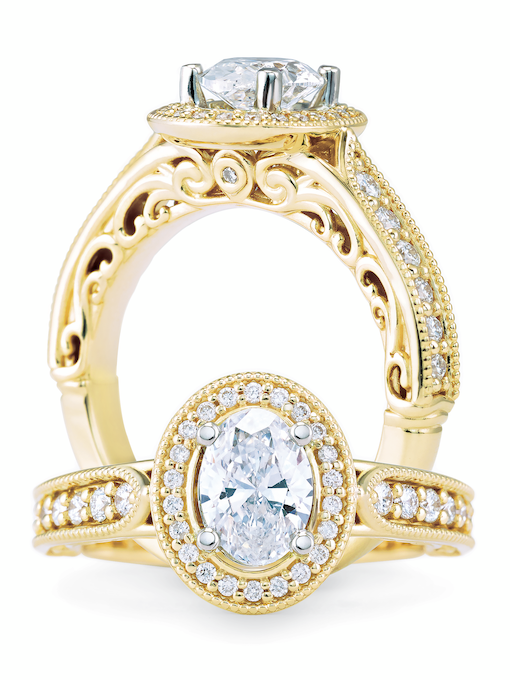Gold
Gold has been a precious metal for coins, jewelry, and other arts since the beginning of human history. Pure gold has a bright yellow color and luster traditionally considered attractive, which it maintains without oxidizing in air or water. Gold of lower karat, typically 22k, 18k, 14k or 10k, contains higher percentages of copper, as well silver and palladium.
In today’s market, trading in several exchanges of both physical gold and gold derivatives determines the daily gold price, with the traditional London gold price fix still serving as the daily benchmark price. This fix is set twice daily at 10am and 3pm. The price of gold is usually measured in US dollars per troy ounce.
Jewelry is just one source of demand for gold. Investment, central bank reserves and the technology industry are also creating large demands that affect the price of gold.


Gold in jewelry
Because of the softness of pure (24k) gold, it is usually alloyed with base metals for use in jewelry, altering its hardness and ductility, melting point, color, and other properties. Alloys with lower karat, typically 22k, 18k, 14k or 10k, contain higher percentages of copper, silver, or palladium.
Copper is the most used base metal, yielding a redder color.
Eighteen-carat gold, containing 25% copper, is found in antique and Russian jewelry and has a distinct, though not dominant, copper cast, creating rose gold.
Fourteen-carat gold-copper alloy is nearly identical in color to certain bronze alloys, and both may be used to produce police and other badges.
Blue gold can be made by alloying with iron and purple gold can be made by alloying with aluminum, although this is rarely done except in specialized jewelry. This type of gold is more brittle and therefore more difficult to work with when making jewelry.
Fourteen and eighteen carat gold alloys with silver alone appear greenish-yellow and are referred to as green gold.
White gold alloys can be made with palladium or nickel.
Gold & History
3600 BC -First melting of gold. Egyptian goldsmiths carry out the first melting, or fusing of ores, to separate the metals inside. They use blowpipes made from fire-resistant clay to heat the smelting furnace.
1848 – California Gold Rush begins. John Marshall discovers gold flakes while building a sawmill near Sacramento, California. The greatest gold rush of all time follows as 40,000 diggers flock to California from around the world.?
1885 – First Faberge Easter egg crafted. Carl Faberge makes his first gold Imperial Easter Egg for Tsar Alexander III. Named “The Hen Egg”, it was commissioned as a gift from the Tsar to his wife, the Empress Maria Fedorovna, beginning a tradition that lasts until 1917.
1944 – Bretton Woods Conference. The Bretton Woods Conference sets the basis of the post-war monetary system. The US dollar is set to maintain a $35=1 oz gold conversion rate. Other currencies are fixed in terms of US dollar, thus forming a Gold Exchange Standar
1967 – First South African Krugerrand. The Krugerrand is introduced as a vehicle for private ownership of gold. This iconic coin is intended for circulation as currency.
1971 – “Gold window” closed. The Bretton Woods system of fixed exchange rates comes to an end as President Nixon “closes the gold window”, suspending US dollar convertibility to gold. The world enters its present-day system of floating exchange rates.
2001 – First gold used in heart surgery. Boston Scientific markets the first gold-plated stent (Niroyal) used in heart surgery. Inserted inside large arteries and veins, such stents act like scaffolding, propping open the blood vessels to allow adequate flow.
Gold & Numbers
- 60% of gold mined today becomes jewelry.
- 185,000 tons of gold have been mined since the beginning of civilization.
- Fort Knox holds 5,600 tons of gold.
- US Federal Reserve holds 7,200 ton of gold.
- 750 is the number of parts per thousand of pure gold in 18 carat gold.
- The largest gold nugget weighted at 2316 troy ounces was found in Moliagul, Australia in 1969. It was called the “Welcome Stranger”.
- Julius Caesar gave 200 gold coins to each of his soldiers from the spoils of war in defeating Gaul.
- It is rarer to find a 1-ounce nugget of gold than a five-carat diamond.
- Gold can be used in food and has the E number

